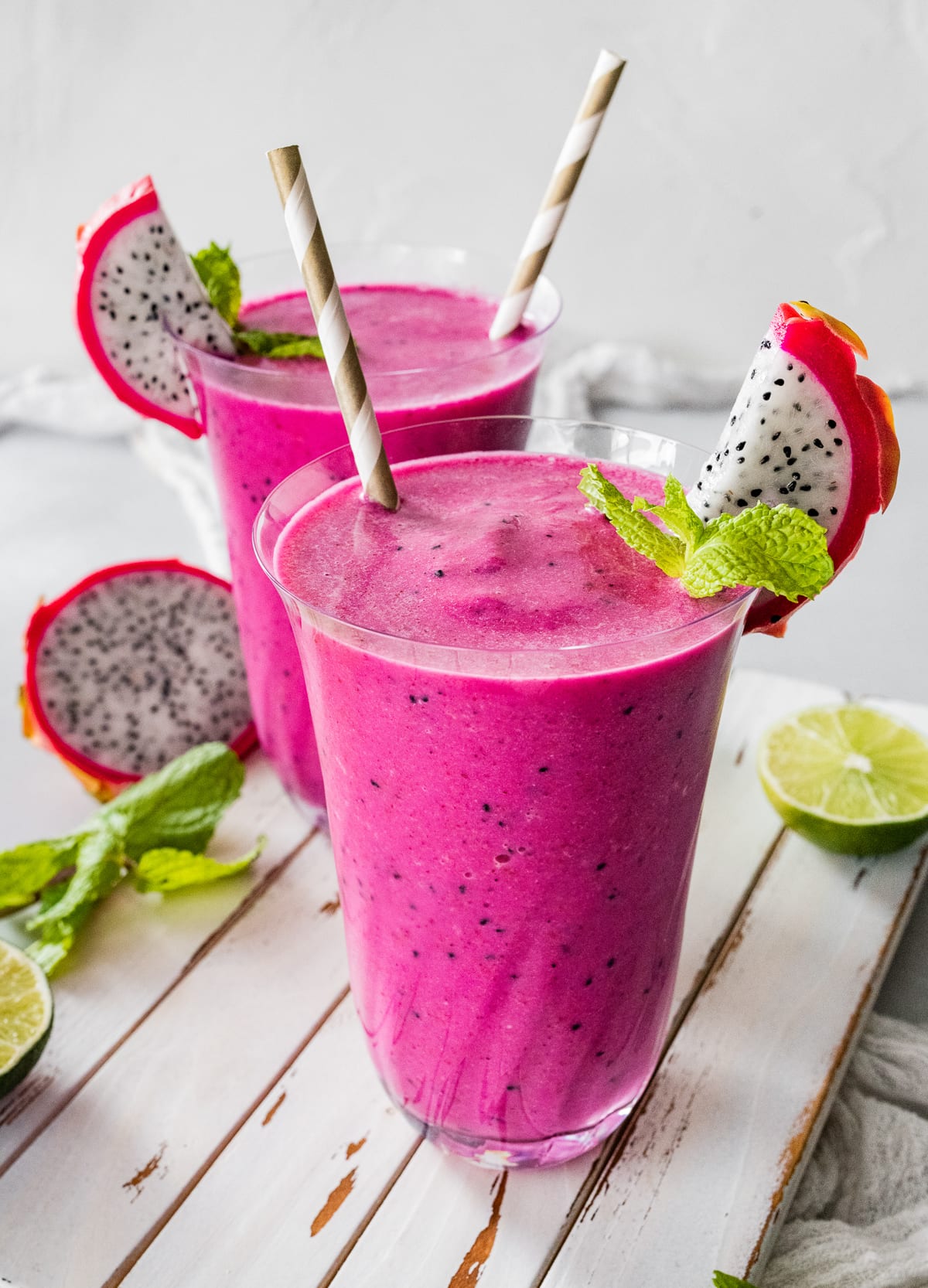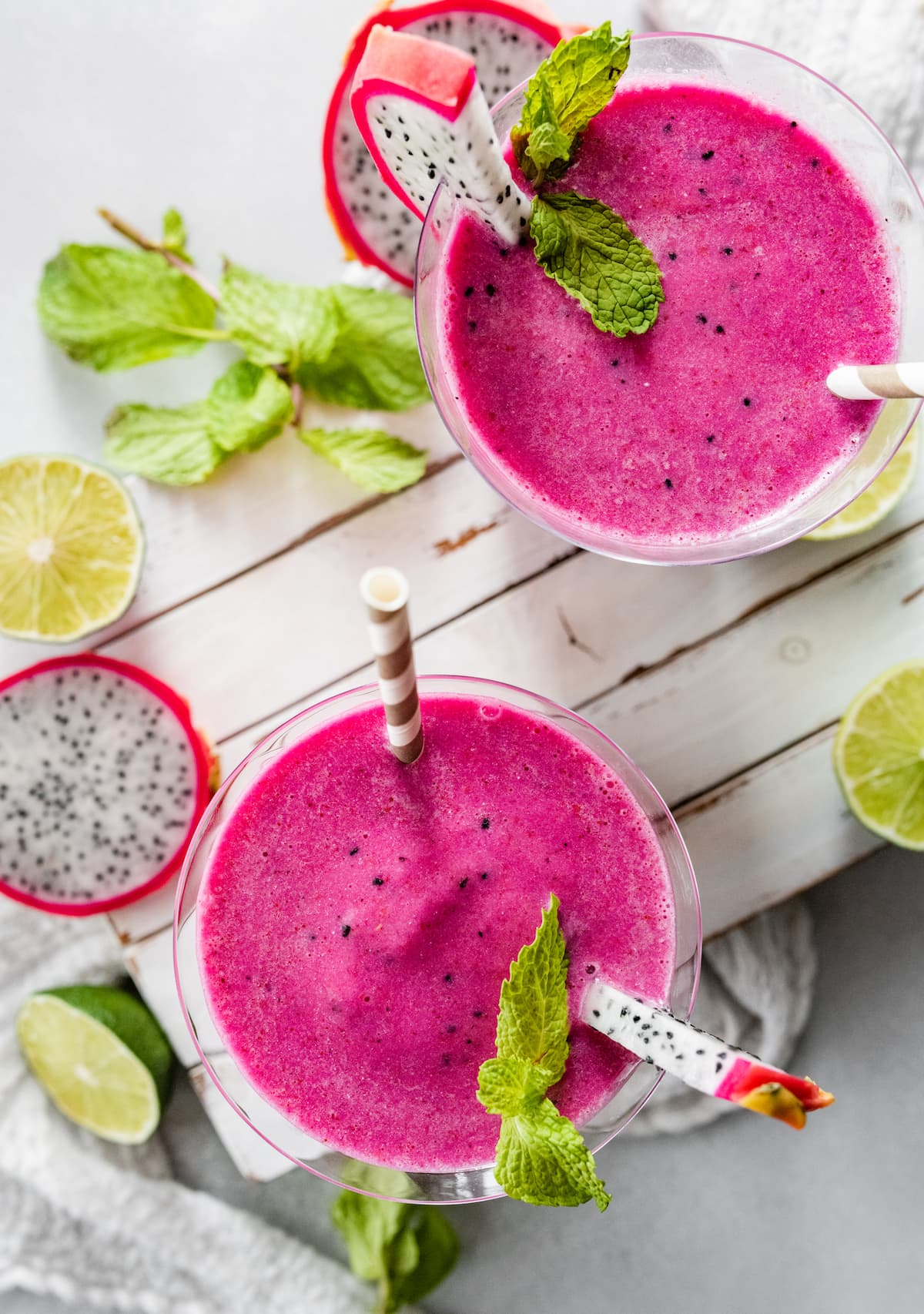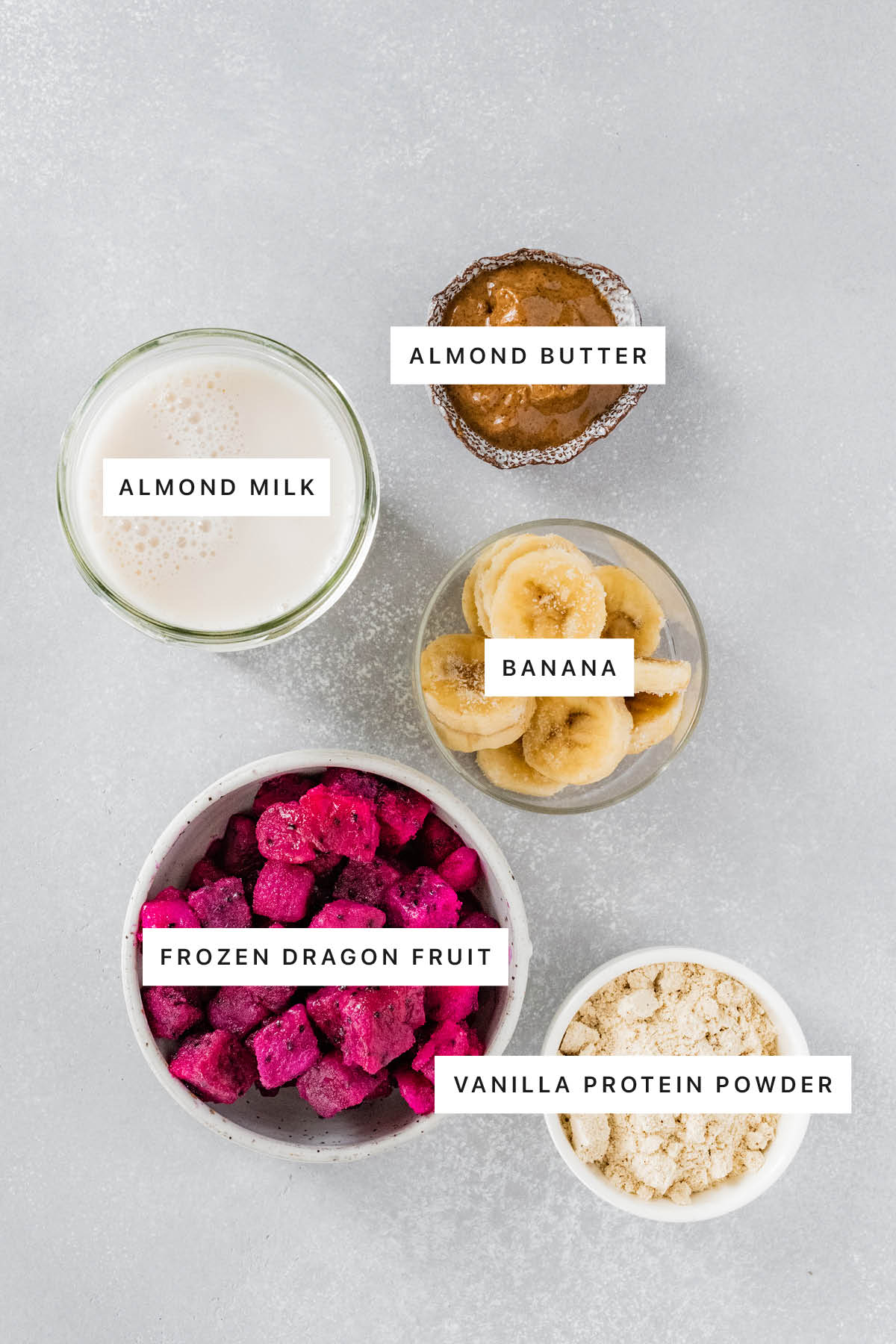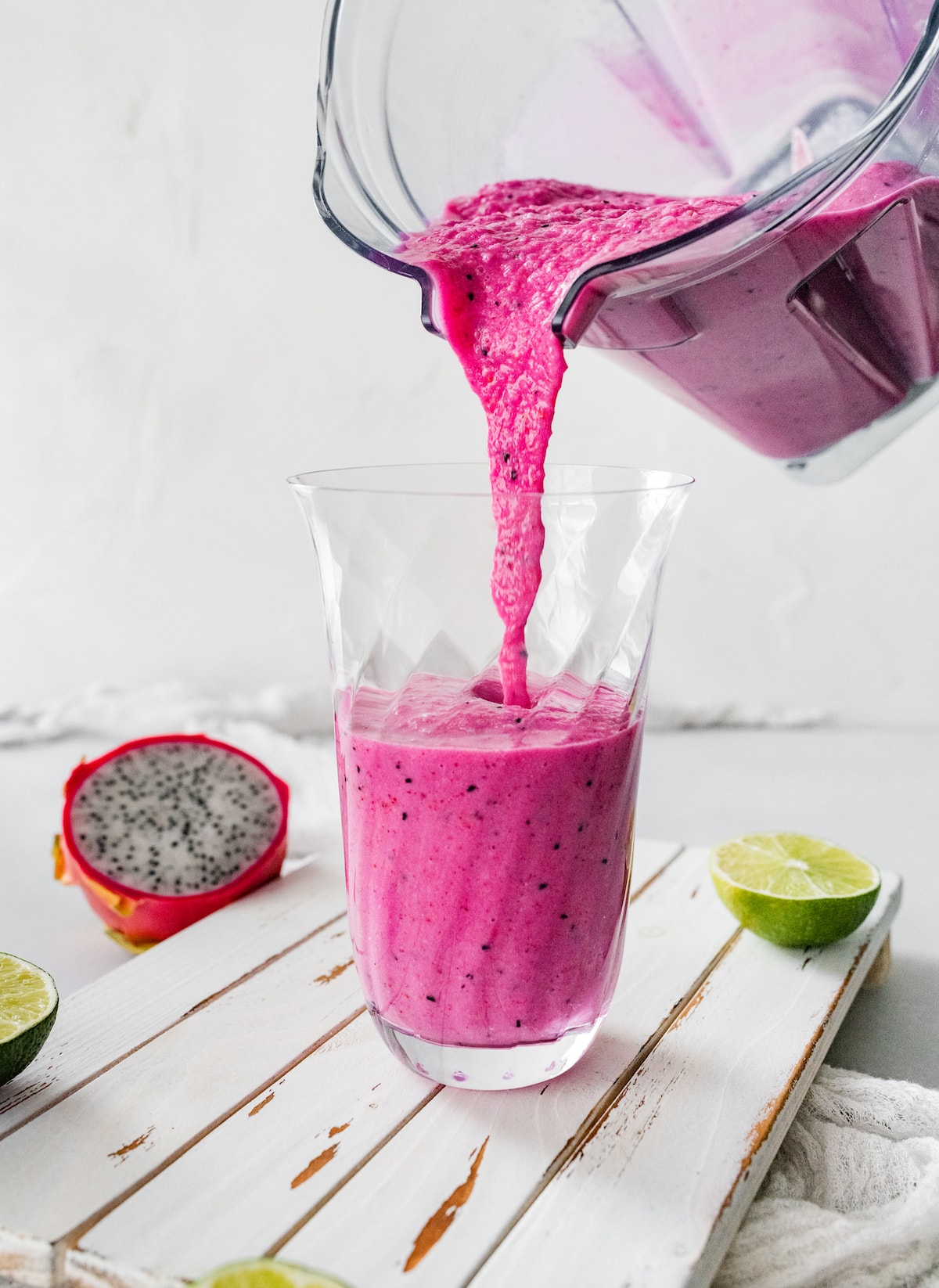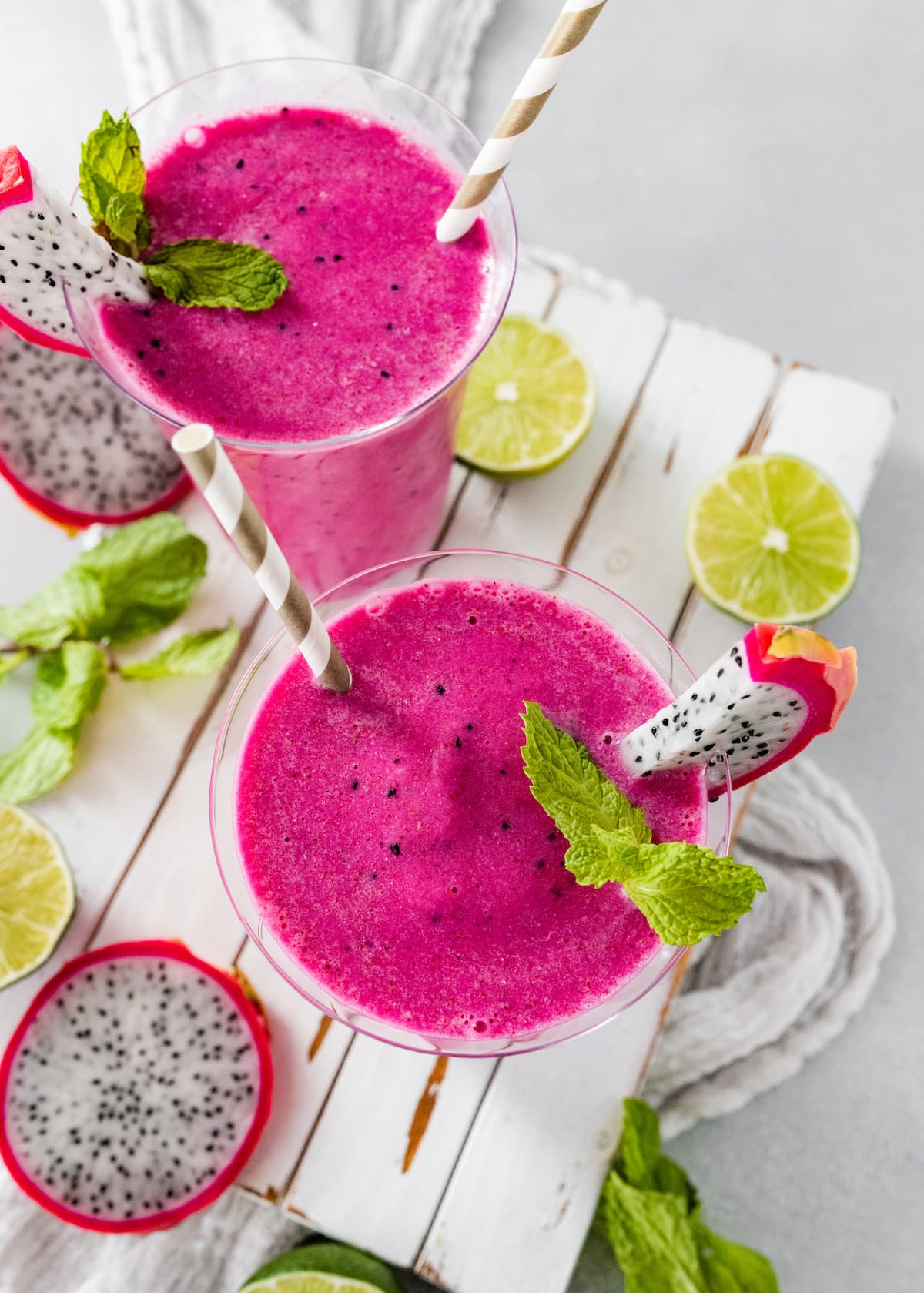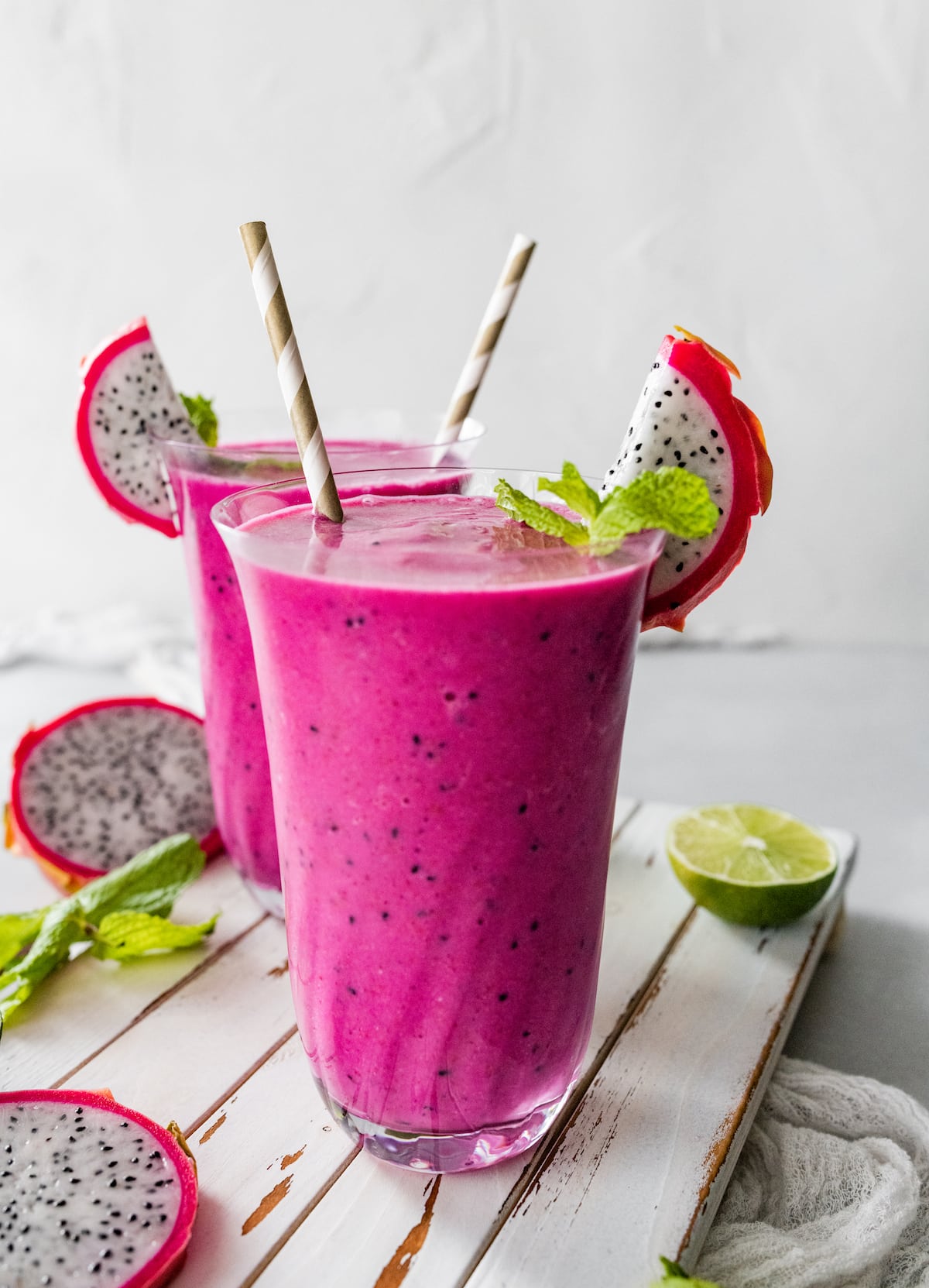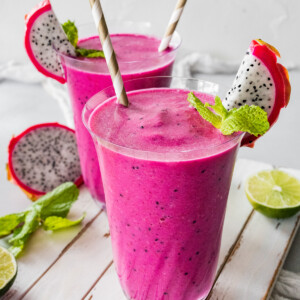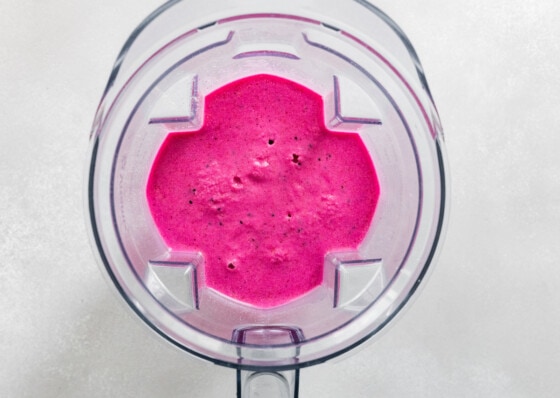5 0 Published Jun 30, 2023, Updated Aug 28, 2023 Not only is this smoothie delicious, but it’s super easy to make with just 5 simple ingredients. It’s also loaded with tons of nutrients thanks to the dragon fruit and is packed with over 20 grams of protein, making it a great smoothie option for an on-the-go breakfast or a post-workout snack.
What is Dragon Fruit?
Dragon fruit is a tropical fruit that is native to Southern Mexico and Central America. It is also known as pitaya, pitahaya and strawberry pear. It has a unique taste that reminds me of a melon or kiwi. The outside of the fruit is a vibrant pink color with light green (hence the dragon name). The inside of the fruit is typically a white flesh with black seeds, but other times it will be a vibrant pink flesh. It is rich in vitamins, minerals and antioxidants. I can sometimes find fresh dragon fruit at the grocery store depending on what time of year it is, but I typically buy frozen dragon fruit, especially for smoothies.
Dragon Fruit Health Benefits
As a nutritional powerhouse, dragon fruit is low in calories but rich in many essential vitamins and minerals. Here are some impressive health benefits of dragon fruit (source):
High in fiber, which can contribute to feelings of fullness and help regulate blood sugar levels. High in essential vitamins and minerals like vitamin C, vitamin E, calcium, potassium, magnesium and iron. It also supplies beneficial plant compounds like polyphenols, carotenoids and betacyanins. Packed with antioxidants, which can help reduce inflammation and protect your cells from damage. Contains prebiotics, which helps to promote a good bacteria in your gut. Has immune-boosting properties thanks to its high supply of vitamin C and carotenoids.
Ingredients & Substitutions
almond milk – the liquid base for this smoothie. I like to use unsweetened vanilla almond milk for extra flavor, but you can substitute it with any other plant-based milk. My second choice would be oat milk, which adds some creaminess, but feel free to use your favorite type of dairy-free milk. If you don’t want to use milk you could also use water, coconut water or orange juice as the liquid base for this smoothie. dragon fruit – I used the Pitaya Foods frozen dragon fruit cubes for this smoothie, which can typically be found in the frozen section of grocery stores. If you can’t find the cubes, you can use the frozen smoothie packets. banana – frozen banana adds creaminess and natural sweetness. You can follow my guide on how to freeze bananas for smoothies. If you’re not a banana fan, see below for some ideas for substitutions. vanilla protein powder – the main source of protein. I personally love Nuzest protein powder. It’s vegan, has minimal ingredients and tastes delicious. (Use code eatingbirdfood for 15% off your order). That said, feel free to use your favorite brand of protein powder. almond butter – adds a dose of healthy fats and a subtle nutty flavor. Feel free to swap it with another nut or seed butter of your choice.
How to Make
This dragon fruit smoothie recipe doesn’t get much easier! Place all the ingredients into a high-powered blender and blend until smooth. Taste and adjust the consistency as needed, adding ice for a thicker smoothie or more liquid for a thinner smoothie. Pour smoothie into a glass and top favorite toppings, if desired. Enjoy!
How to Make This Smoothie Without Banana
The frozen banana in this recipe gives the smoothie a thick and creamy texture and it also adds a bit of sweetness, without being too overpowering. If you’re looking for a low-sugar option, are allergic to bananas or simply don’t like them, here are some ideas for replacements:
frozen fruit – swap the frozen banana with another frozen fruit like mango, pineapple or berries. ice – replace the frozen banana with ice (about 1 cup). It will give the smoothie volume and a nice, frozen slushy texture. frozen milk ice cubes – this is the same concept, but instead of using regular ice cubes, make frozen cubes using your favorite non-dairy milk (like almond or coconut milk) and use about 1 cup of these cubes instead of the frozen banana. frozen cauliflower rice – I use frozen cauliflower rice in my smoothies all the time and it works as a low-sugar replacement for frozen bananas. I do find that it adds a different texture to smoothies especially if you use a large amount. I’d start with 1/4 cup, give the smoothie a taste and then add more if needed. avocado – fresh (or frozen) avocado works great as a sub for the creaminess banana adds to smoothies. frozen zucchini – like frozen cauliflower, frozen zucchini works great as a low-sugar replacement for frozen bananas. It also doesn’t add a ton of flavor! You can blanch or steam your zucchini before freezing if you want to make it easier to digest, but I don’t find this necessary.
Other Ways to Add Protein
If you don’t have protein powder on hand or simply don’t want to use it, here are some other ways to add protein to your smoothie:
Greek yogurt: Add 1/2 cup of plain full-fat Greek yogurt to your smoothie. This will add about 10-15 grams of protein, depending on what brand you use. Cottage cheese: Add 1/4-1/2 cup cottage cheese to your blender. This will add around 7-14 grams of protein. Nuts/seeds and nut butter: Chopped nuts or seeds and/or more nut butter is a great way to add a little bit of extra protein to your smoothies. Some options are chia seeds, hemp seeds, almonds, walnuts, pecans or cashews. You can also swap the nut butter for a seed butter like sunflower seed butter or tahini if you have a nut allergy.
More Healthy Smoothie Recipes
Easy Blackberry Smoothie Carrot Cake Smoothie Health Nut Smoothie Banana Smoothie Key Lime Pie Smoothie Strawberry Banana Smoothie Raspberry Smoothie Sweet Potato Smoothie Tropical Green Smoothie Clementine Smoothie Cottage Cheese Smoothie Chocolate Blueberry Smoothie
Be sure to check out all the smoothie recipes and the full collection of drink recipes on EBF!
